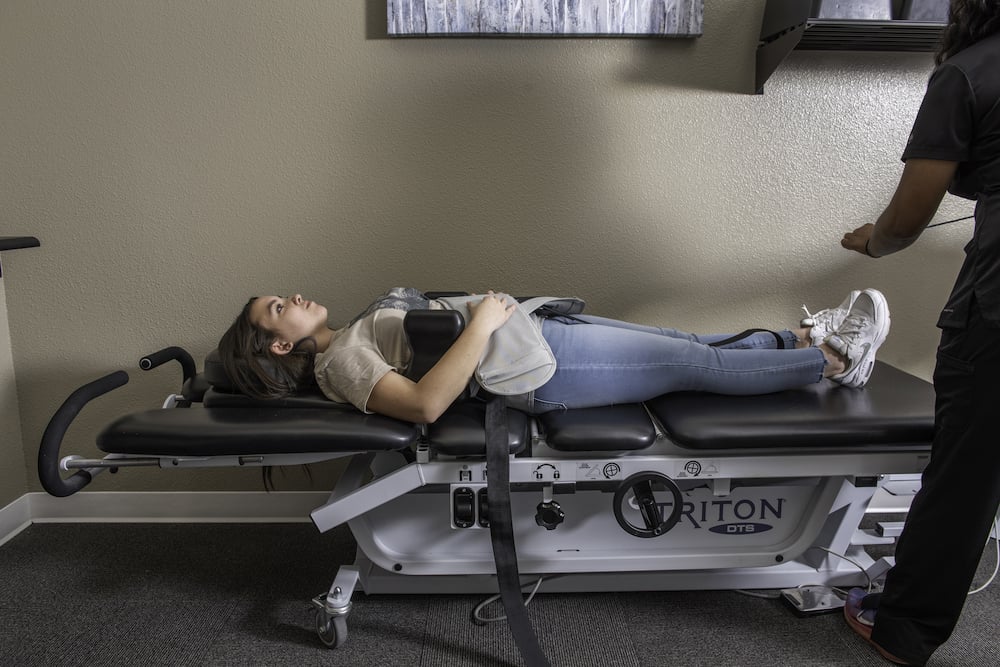Stay Ahead of the Curve: Effective Strategies for Pain Prevention
4 min read

Just about everyone has felt some form of ongoing pain in their lives. When pain is short-lived, it can be manageable and thought of as “no big deal”. However, when pain doesn’t go away after a week or so, it can get in the way of daily life and become a serious source of discomfort. It’s always better to address pain sooner, rather than later. The longer you wait, the more difficult it can be to get relief quickly.
Chiropractic care is used by many people to help treat pain and even prevent it before it starts.
Factors Contributing to the Development of Pain
Pain is a protective response to damaged tissue that results from injury, disease, overuse, or environmental stress. There are many different reasons why a person may experience pain, including a sudden or traumatic injury, overusing a muscle or joint, or the development of arthritis. Many different factors contribute to the severity of pain, including how you manage it.
Your lifestyle also influences your pain levels and how easy it is to manage your pain. For example, if you have a job that requires physical labor and you sustain an injury from that, then your daily activities at your job could cause the pain to worsen.
Importance of Pain Prevention for Overall Well-being
Few things will slow you down in life the way chronic pain will. It gets in the way of completing day-to-day tasks and it can even make it hard for you to concentrate or sleep because you’re focused on how you hurt.
The best thing you can do in these situations is to find the root cause of the pain so it can be addressed. It’s not always possible to “fix” the cause of the pain, but there are ways to manage it and prevent it from getting worse.
The Role of Chiropractic Care in Pain Management & Prevention
A chiropractor can help you with finding the source of pain and develop a plan that is usually drug-free. They will create a plan that serves as a long-term approach to wellness and preventing pain from coming back or getting worse. Your plan may change over time as you go from relieving pain to preventing pain.
The chiropractor will also do all they can to help you remain pain-free without the use of medications. This is ideal for those who don’t want to use pain medicines for the long term. These drugs come with some risks, including stomach irritation, tolerance buildup, or even addiction.
Maintaining a Strong and Flexible Body: The Role of Exercise and Stretching
Ongoing pain can really get in the way of life. It is important to take steps to take care of your body in order to prevent pain in as many ways as possible. Taking protective measures to prevent pain can make all of the difference in preventing an injury and keeping your body healthy.
Exercising regularly helps to keep your bones, joints, and muscles strong and prevent injuries and pain. Strong muscles help to support your body through physical activity and strenuous work, preventing strains and sprains. It is also important to stretch regularly to prevent pain. Stretching helps to maintain flexibility and joint stability.
Exercises that are great for preventing pain include low-impact exercises like swimming, walking, and yoga. These exercises help to work the muscles to support health without putting too much strain on the joints, where pain is often located
Optimizing Your Environment for Pain-Free Living
It is important to pay attention to how your lifestyle factors are exacerbating pain. If you work in an office setting, you should pay attention to your workspace setup, especially if you struggle with neck or back pain. Ergonomic furniture such as a supportive chair or standing desk can help to keep your posture upright while you work throughout the day.
You also want to make sure to use proper body mechanics if you have a job that requires heavy lifting like construction or hospital work.
Some tips you can try to help maintain good ergonomics at home and work include:
- Taking standing and walking breaks throughout the day to prevent sitting for too long.
- Stretching at the start of the day and throughout the day.
- If you have a job that involves heavy lifting, always ask for assistance rather than trying to lift heavy objects by yourself. Always bend at the knees when you do need to lift objects.
- When you exercise, you should make sure to always warm up and cool down properly by stretching and easing into your workout.
Self-Care Practices: Nurturing Your Body and Mind
Practicing self-care is very important for overall well-being, and it can help with managing pain as well. Managing pain can help to prevent pain and help you with managing whatever pain you do have. Manage stress by practicing meditation, doing breathwork, setting boundaries at work and in relationships, and taking breaks when needed.
It is also important to get enough sleep, stay hydrated, and eat a nutritious diet. Your body goes through a healing and recovery process while you sleep, which can help to manage pain, so it is important to get healthy amounts of restful sleep. Proper hydration and nutrition can help to keep your body and mind healthy. Taking care of yourself helps to reduce inflammation and lower pain levels by promoting proper healing.
Talk With a Chiropractor for a Pain Prevention Plan
Chiropractors are trained to help patients relieve pain and prevent it from developing in the future. There are many different drug-free techniques depending on whether the pain is in your joints, muscles, ligaments, or tendons. The right treatments for each patient will vary and does not always include a spinal adjustment. If you’ve never talked to a chiropractor about a pain prevention plan, it’s a good time to set up an appointment.
Request an appointment at our office in The Woodlands. Our chiropractors will talk with you about your personal health and injury history as well as discuss your lifestyle so a treatment plan can be created that’s best for you.
More from Our Blog on This Topic
5 min read




